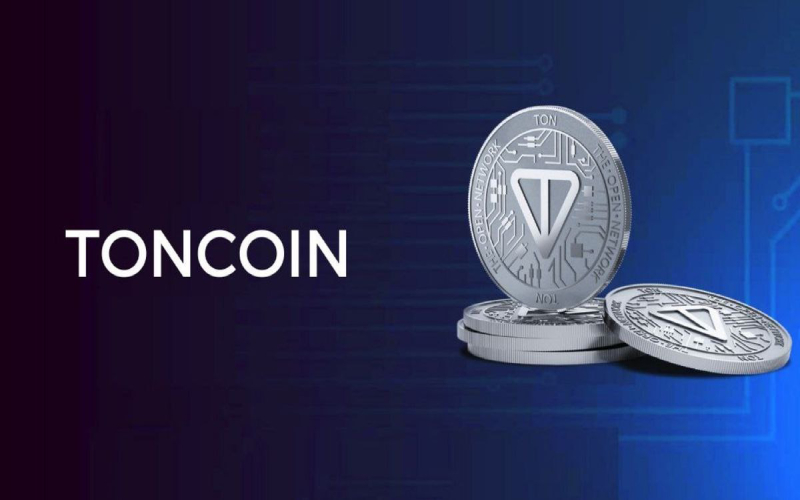Decentralized exchanges (DEXs) have reshaped cryptocurrency trading, providing users with increased control and transparency.
OPTUS is built on TON Blockchain, aiming to revolutionize decentralized finance by enabling informed decision-making for traders. With its great features, OPTUS is set to redefine the trading experience for cryptocurrency enthusiasts. This article covers its key highlights. OPTUS leverages TON Blockchain, a highly efficient and scalable network known for its lightning-fast transaction processing capabilities. Capable of handling thousands of transactions per second. The Open Network has provided the ideal foundation for a superior DEX experience. It utilizes this strong infrastructure to offer seamless, secure, and efficient trading opportunities.
In their article, they mentioned an issue that they faced and also brought up a solution for it. They noted that “Despite TON’s notable strengths, the DeFi segment on the network faces a significant hurdle in the form of low Total Value Locked (TVL). This fragmented liquidity poses several issues, including high slippage and a suboptimal user experience.”
Firstly, getting to know what is exactly a DEX Aggregator.
The DEX aggregator in OPTUS utilizes advanced algorithms and smart contract technology to analyze liquidity across various DEXs on the TON blockchain. These algorithms assess factors such as trading volume, asset availability, and price competitiveness to determine the most optimal sources of liquidity for each trade. When a user places a trade on their platform, the aggregator scans and identifies the DEXs offering the best liquidity and pricing for the specific trading pair, ensuring the user receives the best possible execution price with minimal slippage. By aggregating liquidity from multiple sources, OPTUS minimizes slippage, which refers to the difference between the expected price of an asset and the executed price due to market volatility and low liquidity. With reduced slippage, traders can execute trades at more competitive prices, maximizing their trading potential. Their aim is to create a unified trading environment where users can conveniently access, compare prices, execute trades, and monitor their portfolios through a single interface.
In addition to unifying liquidity, it offers another great feature — splitting transactions. Large transactions are divided into smaller parts and executed at the same time across multiple DEXs. This strategic approach notably lowers slippage and improves trading outcomes, allowing users to achieve better prices and increase their returns.
Gasless Transactions: Trading Non-Stop:
OPTUS aims to simplify trading on their platform by eliminating the need for users to keep TON in their wallets for gas fees. With gasless transactions, you can seamlessly trade without worrying about managing gas balances.
Fixed Spread Trading, The Optimal Prices:
Fixed Spread Trading and Optimal Prices are key features implemented by OPTUS to provide consistent and favorable trading conditions for users. This pricing mechanism aims to minimize price fluctuations and ensure greater price certainty. To achieve fixed-spread trading, OPTUS utilizes advanced algorithms and market-making strategies. These algorithms consider market conditions, liquidity availability, and price trends to determine the optimal spread for each trading pair. By maintaining a fixed spread, OPTUS eliminates the uncertainty associated with variable spreads, providing traders with a predictable cost structure for their trades.
In addition to fixed spreads, OPTUS employs liquidity aggregation from multiple DEXs to offer optimal prices. Through constant scanning and analysis of various liquidity sources, OPTUS selects the most competitive rates for users. This approach allows traders to access a wider pool of liquidity and optimize price execution, ensuring they get the best possible prices for their trades. Market making is a strategy employed by OPTUS to ensure consistent liquidity in the market. By continuously offering buy and sell orders, OPTUS acts as a liquidity provider, maintaining a steady supply of assets for trading. This market-making strategy helps narrow the difference between buying and selling prices (spreads) and reduces price slippage, creating a favorable trading environment for users.
Liquidity and Trading Opportunities:
With the aggregation of liquidity from multiple DEXs on TON Blockchain, OPTUS provides traders with access to a vast pool of assets and trading pairs. This aggregation leads to competitive prices, reduced slippage, and increased trading opportunities. Traders can capitalize on the comprehensive liquidity offered by OPTUS, ultimately enhancing their trading strategies and potential profitability.
OPTUS analytical dashboard key features:
- Real-time Monitoring of TON DEXs:
- Collecting real-time data from all TON DEXs
- Users have access to up-to-date information on trading volume, liquidity changes, and price trends.
- Advanced analytical tools empower users with detailed charts, graphs, and visualizations.
- Users can uncover patterns, identify market trends, and make data-driven decisions.
- Track Liquidity and LP Profitability:
- Monitor liquidity levels and over time changes
- Identify the most liquid DEXs within the network
- Liquidity providers (LPs) gain essential metrics to evaluate profitability and optimize liquidity strategies.
For viewing and tracking their contracts and transactions click here.
In the first half of 2023, OPTUS made significant progress in advancing decentralized trading on TON Blockchain. Some of the key achievements include:
DEX Release: They have successfully launched their decentralized exchange on TON Blockchain, providing users with a secure and efficient platform for trading cryptocurrencies.
Data Collection and Analytical Dashboard: They initiated a data collection initiative, aggregating information from all DEXs within TON Blockchain. This data powers OPTUS’s analytical dashboard, offering users real-time insights into liquidity, profitability, and other crucial metrics.
Q3-Q4 2023: OPTUS Goals
Looking ahead to the third and fourth quarters of 2023, OPTUS has outlined several goals to further elevate the trading experience. The key objectives for this period include:
DEX Aggregator: OPTUS will act as a DEX aggregator, consolidating liquidity from multiple DEXs on the TON blockchain. This consolidation improves trading opportunities for users by reducing slippage, providing competitive prices, and expanding the range of available trading pairs.
TON Node Launch: Implement TON node, enhancing the stability and reliability of the network. This infrastructure development ensures seamless connectivity for all participants on the platform.
Onboarding Market Makers: They will focus on onboarding market makers to the exchange, fostering increased liquidity and trading opportunities for users.
Off-chain Market-Making Platform V1: OPTUS plans to launch the off-chain Market-Making platform, attracting liquidity providers to the ecosystem. This expansion of market depth and liquidity will benefit traders on the platform.
Launching RFQ Orders: OPTUS aims to introduce RFQ (Request for Quote) orders, allowing users to interact directly with market makers. This feature will enable a more personalized trading experience and enhance liquidity.
Integration of Fiat Payment Providers: Aims to integrate fiat payment providers into its platform, facilitating seamless fiat-to-crypto transactions. This integration will bridge the gap between traditional finance and decentralized trading, expanding the reach and accessibility of the platform.
To wrap up, OPTUS is an emerging decentralized exchange on TON Blockchain, striving to improve the trading experience for users




